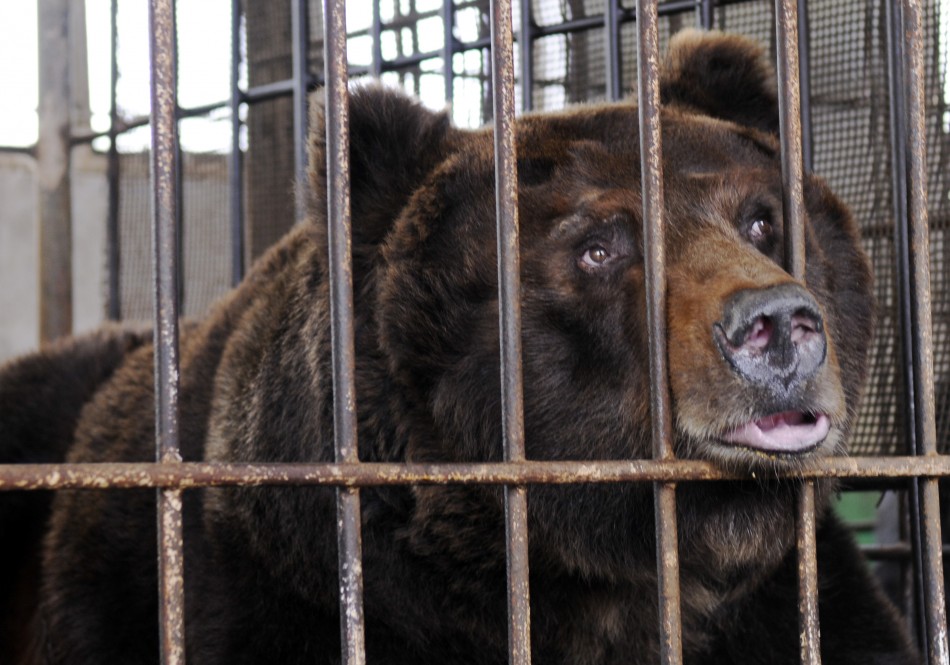Last week, I highlighted the problem of elephant poaching. A week later, a newspaper article in The Straits Times (22/8/14) caught my attention. It read "S'pore on key trade route for bear bile". This is something close to home, and the article reported that Singapore is involved in a long-running illegal trade in bear bile products.You may read the article here.
What is the current situation?
 |
| A BEAR AT A FARM OWNED BY GUIZHENTANG PHARMACEUTICAL, WHICH MAKES TONICS FROM BEAR BILE. PHOTO: MU CHEN/EUROPEAN PRESSPHOTO AGENCY |
 | ||||||||||||||||||||||||
| ENDANGERED BLACK BEAR INSIDE CAGE AT BILE FARM IN WEIHAI, CHINA. PHOTO: INTERNATIONAL BUSINESS TIMES |
Why and how is bear bile traded?
Bear bile is prized in traditional Chinese medicine, and harvested from caged live bears through tubes inserted into their gall bladders, which involves various painful and invasive techniques that can lead to infections. It is sold in various forms such as raw bile, whole gall bladders, pills, powder, flakes and ointments (Foley et al., 2011). These techniques continue to be put into practice despite the availability of numerous effective, affordable herbal and synthetic substitutes (Animals Asia, 2014). About 10,000 bears are kept in bile farms in China, often in cages far too small, with many decrying it as cruel (Huang, 2014).
Potential problems
Bile often contains foreign bodies such as ulcers and contaminants such as urine and faeces, especially from diseased and dying bears (Ngo, 2014). This is a huge worry on public health and welfare, as it may encourage the spread of diseases. Public education should be carried out to warn others of the risks involved.
What is being done?
In Singapore, the Agri-Food and Veterinary Authority (AVA) regularly conducts random and surprise check on shops, monitors online sources for illegal wildlife products, and constantly disseminate advisories to raise awareness and educate retailers on CITES requirements (Ee, 2014).
China's largest manufacturer of bear bile, Kai Bao Pharmaceuticals - which accounts for half of the 30 tonnes of bear bile produced in China annually - will receive state subsidies to conduct research and clinical testing of new methods and find synthetic alternatives such as poultry bile and biotransformation technology (Ngo, 2014).
My thoughts
Similar to the problem of poaching, illegal bear bile trade has to be effectively tackled.
1. It is heartening to note that bear sanctuaries have been built in many countries like China and Vietnam as a rehabilitation center for rescued bears. Perhaps more can be built in places like Russia and Laos, where illegal trade of bear bile is rampant.
2. Public campaigns should be carried out more frequently. One such campaign already in place is the "Healing without Harm" campaign involving AnimalsAsia, traditional medicine practitioners, and pharmacists. By encouraging them to dispense alternative medicine to patients, demand for bear bile can be reduced.
3. NGO's, activists and animal rights groups can come together and lobby against illegal trading of bear bile. Perhaps these groups can even have a round-table discussion with governments and policy-makers to deal with these issues. There will be a higher chance of positive results if interactions between various organisations and the government are involved. Perhaps even the masses can be engaged and be involved in discussing various ways to stop illegal trade, or even suggest plausible alternatives to discourage bear bile trafficking.
Remember, bears experience pain and trauma no different from humans.
Literature Cited
Anissa Haddadi. (2012) China: Online Outcry Over IPO Plans for Bear Bile Company. [ONLINE] Available at: http://www.ibtimes.co.uk/china-bear-bile-maker-ipo-plans-provoke-300325. [Accessed 24 August 2014].
David Ee. (2014) S'pore on 'key trade route for bear bile. [ONLINE] Available at: http://news.asiaone.com/news/singapore/spore-key-trade-route-bear-bile. [Accessed 24 August 2014].
Foley, K.E., Stengel, C.J. and Shepherd, C.R. (2011) Pills, Powders, Vials and Flakes: the bear bile trade in Asia. TRAFFIC Southeast Asia, Petaling Jaya, Selangor, Malaysia.
Kate Good. (2014) Could this breakthrough be the end to bear bile farms? [ONLINE] Available at: http://www.onegreenplanet.org/news/could-this-breakthrough-be-the-end-to-bear-bile-farms/. [Accessed 24 August 2014].
Jennifer Ngo. (2014) Biggest Chinese producer of bear bile seeks synthetic alternative. [ONLINE] Available at: http://www.scmp.com/news/china/article/1563054/biggest-chinese-producer-bear-bile-seeks-synthetic-alternative. [Accessed 24 August 2014].
Traffic. (2011) Illegal bear bile trade rampant in Asia. [ONLINE] Available at: http://www.traffic.org/home/2011/5/11/illegal-bear-bile-trade-rampant-in-asia.html. [Accessed 24 August 2014].

